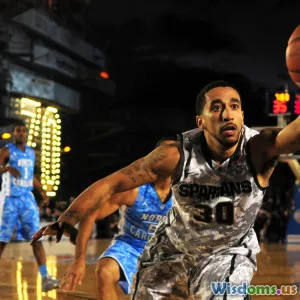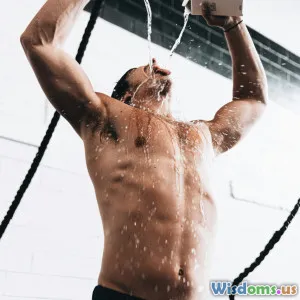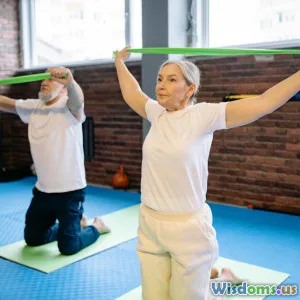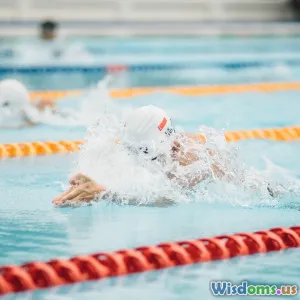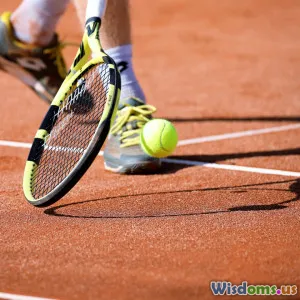
Tennis Footwork Drills Every Junior Player Should Master
9 min read Master essential tennis footwork drills to elevate junior players' speed, agility, and on-court performance. (0 Reviews)
Tennis Footwork Drills Every Junior Player Should Master
The heart of tennis excellence isn't just in a powerful serve or a deft volley—it's in the subtle, lightning-fast footwork that allows players to reach every shot with optimal positioning. For junior players, mastering footwork is a cornerstone that shapes their entire athletic development and the trajectory of their careers.
Introduction: Why Is Footwork Crucial for Junior Tennis Players?
The game of tennis demands explosive movement, quick directional changes, and efficient court coverage. According to the International Tennis Federation, players cover an average of 3 miles per match, frequently accelerating, decelerating, and executing complex foot patterns. For junior athletes, developing impeccable footwork not only enhances performance but also minimizes injury risk by promoting proper mechanics.
Legendary coach Nick Bollettieri once emphasized, "It's not always the hardest hitters who win matches, but those who move best across the court." For juniors, ingraining these patterns early leads to instinctual movement and improved shot execution.
This detailed guide spotlights pivotal footwork drills every junior player should master, blending agility, speed, balance, and coordination—elements fundamental to tennis success.
The Foundations of Tennis Footwork
Before delving into drills, understanding the components of effective footwork is essential:
- Balance: Maintaining a stable center of gravity during swings.
- Speed: Explosive and quick movements to reach the ball.
- Coordination: Precision in foot placement and timing.
- Agility: Smooth changes in direction without loss of speed.
Together, these factors translate into fluid movement that propels juniors forward, backward, and side-to-side seamlessly.
Core Tennis Footwork Drills for Junior Players
1. Ladder Drills: Building Agility and Speed
Agility ladder drills are among the most effective exercises for enhancing quick feet and coordination.
How to Perform:
- Lay out an agility ladder flat on the ground.
- Perform various patterns, such as single-leg hops, two-feet-in-each-box, lateral shuffles, and in-and-out steps.
Benefits:
- Improves foot speed and neurological conditioning.
- Sharpens ankle and knee responsiveness.
Example: Professional junior training programs often dedicate 10-15 minutes to ladder drills. A study in the "Journal of Sports Sciences" highlights a 15% increase in lateral quickness after 6 weeks of consistent ladder training.
2. Cone Drills: Enhancing Directional Changes
Cones mimic opponents’ shots by requiring quick starts, stops, and pivots.
Popular Cone Drills:
- T-Drill: Set four cones in a 'T' shape; sprint forward, shuffle lateral left, then shuffle right before backpedaling.
- Zigzag Drill: Position cones in a zigzag; sprint and cut sharply around each cone.
Benefits:
- Develops explosive acceleration and deceleration.
- Trains reaction to various court scenarios.
3. Split Step Practice: The Secret to Instant Reaction
The split step is the fundamental tennis footwork move used to react to shots.
Technique:
- Just before the opponent's strike, lightly hop and land balanced on the balls of both feet, knees slightly bent.
- This poised stance enables immediate directional shifts.
Incorporation: Coaches urge juniors to practice split stepping along with ball tosses or partner rallies to develop timing.
Michael Chang, known for his exceptional footwork, attributes part of his success to perfecting the split step, allowing him to respond faster than opponents.
4. Side-to-Side Shuffle Drill
Tennis players predominantly move laterally; hence, improving side shuffle strength and speed is pivotal.
Drill Details:
- Mark two lines 10-15 feet apart.
- Shuffle rapidly from one line to the other and back for intervals of 30 seconds.
Benefits:
- Builds lateral quickness and endurance.
- Enhances ankle stability and prevents unnecessary cross-stepping.
In junior academies, incorporating repetitions of this drill enhances court coverage during prolonged rallies.
5. Shadow Tennis Movements
Without a ball or racket, juniors simulate tennis strokes while focusing on foot placement and balance.
Execution:
- Move around the court, progressing through forehand, backhand, volley positions.
- Focus on engaging the proper footwork patterns, such as stepping into the shot and recovering quickly.
Benefits:
- Reinforces muscle memory.
- Allows focus purely on footwork mechanics without the distraction of hitting.
Shadow drills are a favorite among elite junior programs for building movement confidence.
6. Forward and Backward Sprints
Fundamental yet often overlooked, short sprints maximize explosive power vertically across the court.
Drill Setup:
- Mark out 10-20 feet.
- Sprint forward from baseline to net and then stride backward swiftly to baseline.
Benefits:
- Enhances forward burst and backward recovery.
- Teaches juniors proper knee bend and foot strike during backward running—a vital, specific skill.
Research from tennis sport scientists shows the backward sprint speed is crucial for defensive play, especially in counterpunching juniors.
Integrating Footwork Drills into Development Programs
Developing these drills in isolation is beneficial, yet the real progression happens when juniors integrate them into daily training and match-play activities.
- Warm-up Usage: Starting practice sessions with ladder or shuttle cone drills activates the nervous system.
- Progression & Variation: Increase intensity, repeat intervals, or combine drills to simulate match stress.
- Match Application: Encourage juniors to consciously implement split steps and side shuffles during practice matches.
Pro Tip:
Coach Patrick Mouratoglou stresses, “Footwork training must never be neglected. No amount of technical prowess saves you if your feet don’t move.” This reflects the need for consistent, deliberate footwork practice.
Preventing Injuries Through Proper Footwork
Proper footwork mechanics help reduce common tennis injuries such as ankle sprains, knee stress, and Achilles issues. For junior players still developing musculoskeletal strength, mastering footwork lowers impact forces and promotes safer movement patterns.
A 2019 study in the American Journal of Sports Medicine showed that structured footwork training decreased lower limb injuries by 20% among junior athletes.
Tracking Progress and Staying Motivated
To maximize benefits, juniors and coaches should set clear, measurable goals:
- Timed ladder drills for speed improvement.
- Distance covered during cone shuffle exercises.
- Video analysis for split-step technique and recovery efficiency.
Celebrating milestones creates motivation, turning tedious drills into engaging challenges.
Conclusion: Footwork Is the Unsung Hero of Junior Tennis Success
Footwork often runs under the radar but stands as the backbone of high-level tennis performance. For junior players, dedicating focused time to mastering specific footwork drills catalyzes improvements across every facet of the game. The blend of agility ladder exercises, cone drills, split step precision, lateral shuffles, forward/backward sprints, and shadow tennis embeds a movement mastery that translates successfully onto the competitive court.
By methodically practicing these scientifically backed footwork drills, junior players not only enhance their on-court effectiveness but also build their resilience against injury—paving the way for long, fruitful tennis careers.
As you embark on footwork training, remember the words of tennis legend Roger Federer: “Good footwork is the foundation for everything else. Without it, you’re just guessing.” So lace up, get moving, and make court coverage your greatest weapon.
Signature drills, strategic training, and persistence—these form the cornerstone of exceptional tennis footwork for juniors aiming to conquer the court.
Rate the Post
User Reviews
Other posts in Sport-Specific Training
Popular Posts










